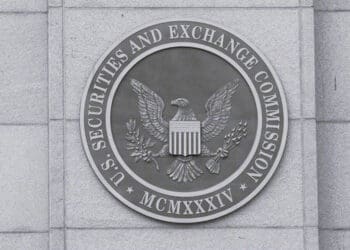Nutter McClennen & Fish’s Mark Jensen and Ian Roffman address the SEC’s recently issued rules for the use of derivatives. Here, they discuss the SEC’s key findings and policy decisions and emphasize the significance of the new rules to affected fund groups and fund investors.
On November 2, 2020, the Securities and Exchange Commission (SEC) issued rules governing the use of derivatives by registered investment companies: mutual funds, ETFs and business development companies. The agency’s action follows a decade of work since the financial crisis and the Dodd-Frank Act – including a 2011 Concept Release and an unadopted 2015 rule proposal – before this rulemaking was proposed late last year.
This article discusses the Commission’s key findings and policy decisions and emphasizes the significance of the new rules to affected fund groups and fund investors.
1. How are fund managers using derivatives?
Mutual funds and ETFs increasingly use derivatives, such as S&P 500 futures or credit default swaps, as an alternative way to put cash to work or to make specific investments quickly and at a reasonable cost. They have become a competitive necessity for many fund managers in seeking to track or outperform their benchmarks. At the same time, the regulation, transparency and liquidity of many types of derivatives have increased as a result of post-financial-crisis reforms. Still, the Commission’s economic analysis pointed out that, as of September 2020, 60 percent of funds used no derivatives at all, and a further 26 percent held derivatives with a gross notional value of less than 50 percent of their net asset values. These figures suggest that the vast majority of funds should have little difficulty operating within the new rules’ objective limits, but for some, the new rule may bring a meaningful increase in compliance efforts and administrative costs.
2. Why does fund derivative use need to be regulated?
From the outset, Section 18 of the Investment Company Act (ICA) has reflected Congressional concern about the risk of leveraged investing by restricting funds’ issuance of senior securities and bank borrowings. In adopting the new Rule 18f-4, the Commission restated its long-held view that derivative transactions (including short-sale borrowings), in which funds assume obligations for future payment or asset delivery, are like senior securities or bank borrowings. This is because a derivative counterparty may have a claim to fund assets superior to that of fund shareholders, thereby increasing the shareholders’ risk of loss (as well as opportunity for gain). This view has served to limit funds’ ability to make leveraged investments, making them much less likely to fail during financial crises. For example, a legally compliant mutual fund would not have found itself in the position of the hedge fund Long-Term Capital Management in 1997, or of AIG’s credit default swap division in 2008, taking on risk many times greater than their capital.
3. How do the new rules differ from prior guidance?
The new Rule 18f-4 replaces a sometimes-inconsistent patchwork of SEC staff guidance on specific types of derivatives, with formally adopted rules governing the cumulative risk posed by all derivative positions held by a fund. Prior guidance, including guidance requiring asset segregation to cover derivatives exposures, is largely repealed. The new rules for the first time impose measurable limits on a fund’s overall portfolio exposure (Value at Risk or “VaR”) and require a formal risk management program.
4. Do all funds need to have derivative programs?
No. Funds that expect to maintain derivatives exposure below 10 percent of net assets do need to adopt appropriate risk management policies and procedures, but do not need to adopt full risk management programs. The 10 percent bucket must include:
(a) the gross notional value (not VaR) of all derivatives requiring future payment, except certain currency and interest rate hedges, plus
(b) borrowings of securities sold short (Funds will have the option of treating reverse repurchase agreements as subject to either the Rule 18f-4 limits or the ICA Section 18 limits on borrowings.).
In addition, money market funds are not entitled to rely on Rule 18f-4; they are ineligible to use most derivatives.
5. What are the program elements?
At a high level, the elements will be familiar to anyone who helped implement ICA liquidity risk management programs over the past three years. Each fund must appoint a derivatives risk manager and implement a program in which it:
(a) conducts a risk assessment of the fund’s anticipated derivatives use;
(b) adopts risk guidelines based on the assessment;
(c) conducts future-looking stress testing “based on extreme but plausible market changes”;
(d) conducts backtesting at least weekly, comparing the fund’s actual gain or loss on a business day with its corresponding VaR;
(e) provides for internal reporting and escalation of material risks; and
(f) conducts reviews of the program’s effectiveness at least annually.
There are corresponding recordkeeping, reporting and additional SEC filing requirements as well. Boards and investment advisers are encouraged to work with experienced counsel in implementing their programs.
6. How will derivatives risk management programs differ from liquidity risk management programs?
Besides the obvious difference in subject matter, there are several procedural and operational differences. Among them, the derivatives risk manager must be an officer of the fund’s investment adviser and not a portfolio manager (or an employee of the fund or board). While acknowledging the greater need for sophisticated portfolio management skill in this role, the non-PM officer requirement may be burdensome and expensive for smaller investment advisory firms. Portfolio managers are generally the most knowledgeable people in the organization about the derivatives they employ, so firms which do not already have a dedicated risk management operation may need to add staff at the executive level.
Second, the fund board’s role is somewhat more limited – indeed more limited than originally proposed. The derivatives risk manager must be approved by the board and will report directly to the board, but the board will not need to adopt the risk management program and will have an oversight role in reviewing the program elements and reports.
Third, the judgments required in measuring and managing these risks at a portfolio level are likely to be more fund-specific than judgments about the liquidity of specific securities, which can mostly rely on reasonably objective market data. The acquisition of reliable market data will only be the beginning of the process.
7. What is VaR and why did the Commission adopt it?
The measurable limits on derivatives exposure will be based on Value at Risk (VaR), a commonly used measure to estimate potential losses on an investment portfolio over a given time period. Based on historical market data, VaR estimates that a fund’s portfolio will not lose more than X percent of its value within a given time period. This measurement approach replaces prior SEC staff guidance which sought to limit leverage by requiring segregation of separate liquid assets based on net derivative value, which could fluctuate widely. Over time, the asset segregation approach was viewed as placing no effective limit on “worst-case” risk. However, as the Commission acknowledged, the VaR measure is neither comprehensive nor, indeed, completely objective.
VaR is incomplete in that it excludes extremely unlikely (less than 1 percent probability) but extremely bad “tail” events. It is not objective because VaR will usually be measured by comparison to the past volatility of an unleveraged (derivatives-free) “reference portfolio” chosen by the risk manager, and because the fund and reference portfolio may drift apart in performance and volatility. The Commission nevertheless determined that the additional oversight required by the risk management program would compensate for the VaR’s shortcomings.
8. What are the VaR limits imposed by the rule?
In concept, the rule requires that a fund’s VaR – its estimated maximum short-term loss – cannot be more than twice that of an unleveraged, derivatives-free reference portfolio. Specifically, funds must measure VaR based on three years of historical market data and calculate the potential loss over a period of 20 trading days with a 99 percent confidence level.
A fund’s VaR, so measured, cannot exceed 200 percent of the VaR of a “designated reference portfolio,” which is either an unleveraged index of the type of securities in which the fund invests, or the fund’s own portfolio excluding derivatives. (If the derivatives risk manager determines that a reference portfolio would not be an appropriate measure, the fund must keep its “absolute” VaR below 20 percent of its own total net assets. In other words, the estimated worst case is no greater than a 20 percent loss for the entire fund over 20 trading days.) These figures are both one-third higher than first proposed – contributing to two Commissioners’ dissents – primarily because the original 150 percent /15 percent limits were found to be too close to historical experience of the S&P 500 index.
9. What happened to the proposed sales practice rules on “complex” products?
The Commission deferred for further study proposed rules governing retail sales of certain leveraged and inverse-leveraged funds and other “complex” products (One of the areas of study will include defining “complex” products.). However, with the exception of certain grandfathered ETFs, leveraged funds will have to comply with Rule 18f-4 VaR limits in the meantime. The deferral of comprehensive action reflected a continued philosophical rift among the five commissioners. The two Democratic Commissioners believe that sales practice rules are necessary to protect individual investors from these products’ difficult-to-understand risks, while the Chair and two Republican Commissioners believe these products are not categorically different from other risky products and can be regulated under the existing disclosure and sales practice framework.
10. When must funds comply?
As with the liquidity risk management rule, the Commission is providing a comparatively long lead time of 18 months after the rule’s effective date for funds to come into compliance. The effective date is 60 days after publication in the Federal Register, so the compliance date will likely be in the third or fourth quarter of 2022.
Derivatives risks are inherently difficult to measure and to manage. The Commissioners did not unanimously agree about where to set the outer limits of those risks. Nonetheless, the new rule will provide a framework that is clearer, more economically meaningful and more consistent than the prior patchwork of guidance.



 Mark Jensen is of counsel in
Mark Jensen is of counsel in  Ian Roffman chairs the firm’s Securities Enforcement and Litigation practice group and is a member of the Executive Committee.
Ian Roffman chairs the firm’s Securities Enforcement and Litigation practice group and is a member of the Executive Committee.






